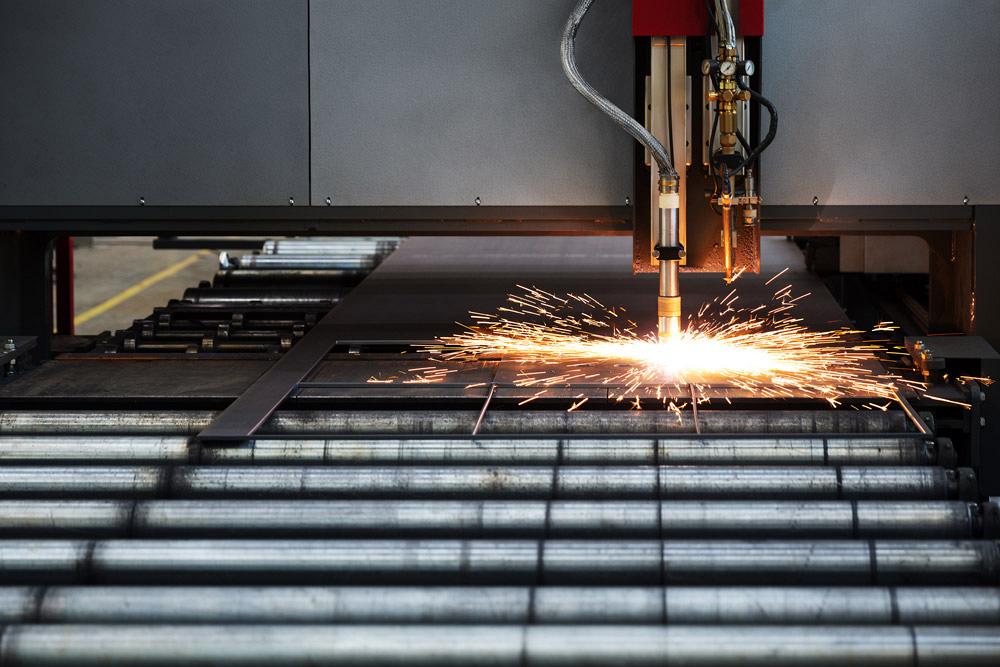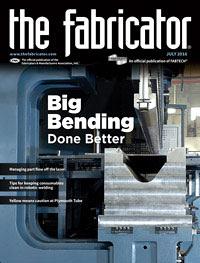Marketing Coordinator
- FMA
- The Fabricator
- FABTECH
- Canadian Metalworking
Categories
- Additive Manufacturing
- Aluminum Welding
- Arc Welding
- Assembly and Joining
- Automation and Robotics
- Bending and Forming
- Consumables
- Cutting and Weld Prep
- Electric Vehicles
- En Español
- Finishing
- Hydroforming
- Laser Cutting
- Laser Welding
- Machining
- Manufacturing Software
- Materials Handling
- Metals/Materials
- Oxyfuel Cutting
- Plasma Cutting
- Power Tools
- Punching and Other Holemaking
- Roll Forming
- Safety
- Sawing
- Shearing
- Shop Management
- Testing and Measuring
- Tube and Pipe Fabrication
- Tube and Pipe Production
- Waterjet Cutting
Industry Directory
Webcasts
Podcasts
FAB 40
Advertise
Subscribe
Account Login
Search
5 ways that CAD/CAM nesting software impacts the bottom line
Savings found in streamlining front-office and shop floor activities
- By Alyson Schoenung
- July 1, 2016
- Article
- Shop Management
Today’s market calls for metal fabricators to take on more small- to medium-volume jobs and turn them around in tight time frames with limited resources. One way fabricators can meet their delivery dates is to rely more on automation. Profitable manufacturing relies on CAD/CAM nesting software to solve a range of needs.
CAD/CAM nesting software needs to work across the whole spectrum of fabricating processes, including punching and laser, plasma, oxyfuel, and waterjet cutting. As manufacturing software evolves, it holds the potential to boost a fabricator’s operation in five ways.
1. Material Utilization
Materials costs, even in today’s business environment where worldwide commodity prices are considered very low, still represent a large portion of a metal fabricator’s operating costs. Any tool that can help to reduce that expense is likely to capture the attention of a shop owner or manager.
Modern nesting software can contribute to higher material yields. Just consider the case of common-line cutting.
Modern nesting software can create layouts on sheet metal that allow for neighboring parts to share a common edge. A common-line cut reduces cut time, scrap, gas, and in the case of certain cutting processes, consumables. (Common-line cutting isn’t always possible. For example, many laser-cut parts require space for lead-in and optional lead-out cutting, making common-line cutting unsuitable. However, because of its potential impact on the bottom line, every company should investigate this practice.)
Nesting software also offers strong part data management, sheet tracking, automated handling, and remnant inventory and utilization. These features enable metal fabricators to maintain material records, sort and track separate jobs on a single sheet, and ensure part integrity and ISO compliance.
It’s not unusual for a metal fabricator using a modern nesting software package to gain first-year material cost savings of several thousand dollars. Tighter nests and better tracking of unused drops ensure better material utilization.
2. Production Efficiency
Metal fabricators make money when machine tools are making parts, especially parts that don’t require rework. Modern software can help to contribute to that.
These software packages rely on the latest manufacturing algorithms to deliver optimized cutting paths, pierces, and other fabrication factors to increase machine capacity, minimize cutting cycle time, and improve part quality. The software directs the machine tools to produce dimensionally accurate parts, while minimizing heat distortion, optimizing edge quality, and reducing nozzle damage and wear by eliminating pierces.
3. Labor Efficiency
Nesting software can make a dramatic impact on a metal fabricator’s operations, but if the software can do more, the potential benefits expand to areas beyond simply doing part layout on a sheet and scheduling machine time.
Modern CAD/CAM nesting software should have an online data transaction management system that bridges nesting to ERP/MRP systems. Now, by automatically and accurately tracking work orders and inventory, a company saves labor time per shift that used to be dedicated to individual workers trying to stay on top of job travelers and raw material stock. By using this type of software functionality, metal fabricators can expect an increase in production capacity without adding personnel or machinery.
Labor savings is not limited to streamlining job tracking and inventory management. The software can make an impact on the shop floor as well.
To assist the employee charged with separating parts coming off of a machine tool, the software can produce reports that color-code parts, indicating which jobs are connected to a particular work order. For example, all blue parts are unloaded to one cart, and green parts to another cart. Parts that are scheduled to be cut on a just-in-time basis are then delivered to the right downstream production process without fear of delay, keeping production flowing. Employees aren’t wasting time trying to figure out what parts go to what pallet and where to deliver the parts after separation is complete.
4. Data Management
Modern CAD/CAM nesting software needs to have features that allow for seamless integration into a metal fabricating operation. It should have Windows®-based navigation, easy part import, and CAD/CAM integration. In short, if a metal fabricator imports a design file for an entire assembly, the software should be able to separate all the individual parts of the assembly, determine the most efficient means of manufacturing, create the code for the machine tools to create those individual parts, and schedule the work. The result of implementing such a software package is that a programmer can handle the scheduling of multiple machines and enjoy much faster programming times when compared to older software.
In addition, total integration of the CAD/CAM nesting software with a shop’s management software allows the business to stay on top of material needs in real time. That means a shop needs to stock only the sheets that will be consumed in the near term; it doesn’t have to maintain a huge inventory just to accommodate surprise orders. Typically, a shop with a totally integrated software setup knows what’s coming. This JIT approach to material management can save a metal fabricator thousands of dollars in inventory management costs.
5. Manufacturing Automation
A modern metal fabricator shouldn’t have to spend hours manually digitizing and nesting cutting operations for the many part geometries it processes on a daily basis. Today’s CAD/CAM nesting software can provide an automated concurrent manufacturing process. It can nest and automate a week’s worth of parts in minutes.
About the Author
Related Companies
subscribe now

The Fabricator is North America's leading magazine for the metal forming and fabricating industry. The magazine delivers the news, technical articles, and case histories that enable fabricators to do their jobs more efficiently. The Fabricator has served the industry since 1970.
start your free subscription- Stay connected from anywhere

Easily access valuable industry resources now with full access to the digital edition of The Fabricator.

Easily access valuable industry resources now with full access to the digital edition of The Welder.

Easily access valuable industry resources now with full access to the digital edition of The Tube and Pipe Journal.
- Podcasting
- Podcast:
- The Fabricator Podcast
- Published:
- 04/16/2024
- Running Time:
- 63:29
In this episode of The Fabricator Podcast, Caleb Chamberlain, co-founder and CEO of OSH Cut, discusses his company’s...
- Industry Events
16th Annual Safety Conference
- April 30 - May 1, 2024
- Elgin,
Pipe and Tube Conference
- May 21 - 22, 2024
- Omaha, NE
World-Class Roll Forming Workshop
- June 5 - 6, 2024
- Louisville, KY
Advanced Laser Application Workshop
- June 25 - 27, 2024
- Novi, MI
































